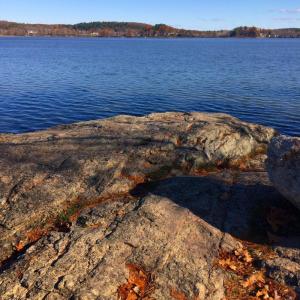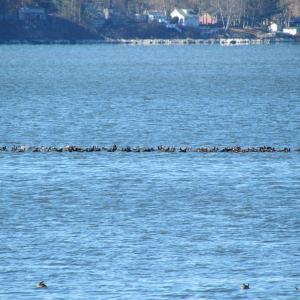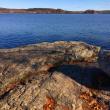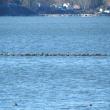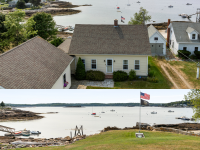When a Sea Duck Becomes a Lake Duck
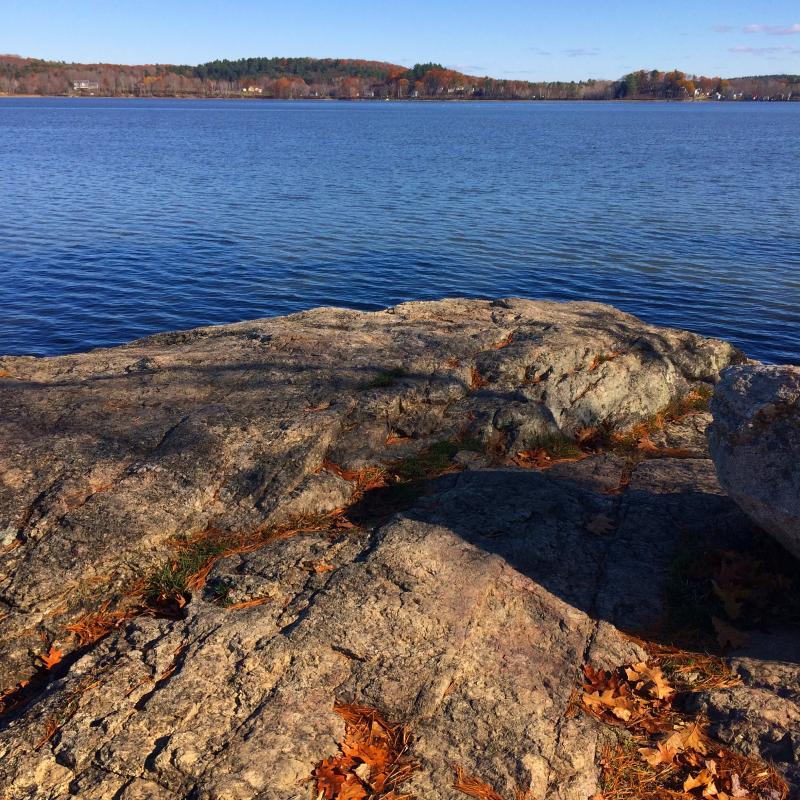 Sabattus Pond has become one of the best-known waterfowl hotspots in Maine. The town park and boat landing offer great vantage points for scanning for birds. Courtesy of Allison Wells
Sabattus Pond has become one of the best-known waterfowl hotspots in Maine. The town park and boat landing offer great vantage points for scanning for birds. Courtesy of Allison Wells
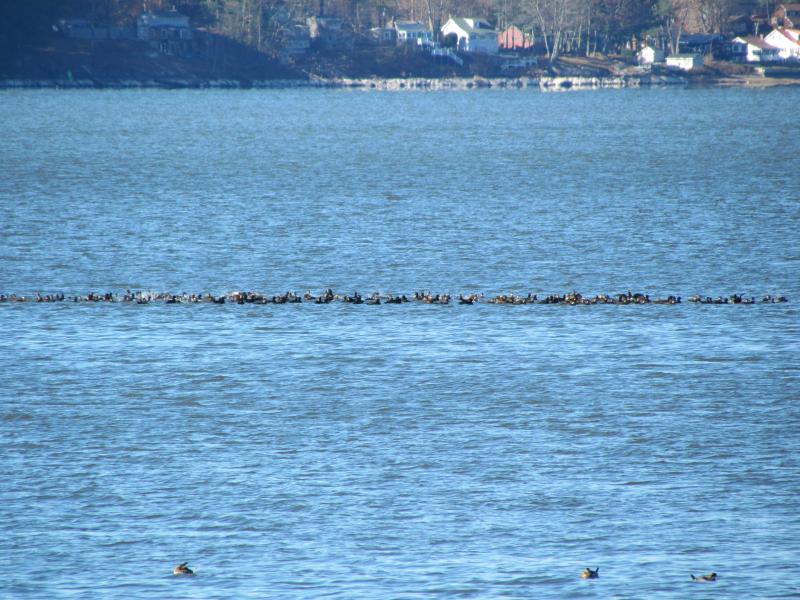 We estimated about 240 black scoters on the Sabattus Pond over the weekend, one of the larger concentrations of the species that we remembered seeing in recent times. We expect to see this species on the ocean where they spend the winter, not on the fresh waters of a Maine lake. Courtesy of Jeff Wells
We estimated about 240 black scoters on the Sabattus Pond over the weekend, one of the larger concentrations of the species that we remembered seeing in recent times. We expect to see this species on the ocean where they spend the winter, not on the fresh waters of a Maine lake. Courtesy of Jeff Wells
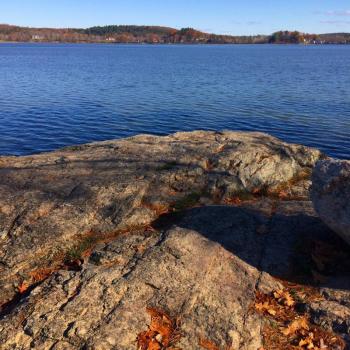 Sabattus Pond has become one of the best-known waterfowl hotspots in Maine. The town park and boat landing offer great vantage points for scanning for birds. Courtesy of Allison Wells
Sabattus Pond has become one of the best-known waterfowl hotspots in Maine. The town park and boat landing offer great vantage points for scanning for birds. Courtesy of Allison Wells
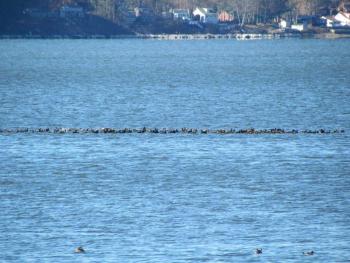 We estimated about 240 black scoters on the Sabattus Pond over the weekend, one of the larger concentrations of the species that we remembered seeing in recent times. We expect to see this species on the ocean where they spend the winter, not on the fresh waters of a Maine lake. Courtesy of Jeff Wells
We estimated about 240 black scoters on the Sabattus Pond over the weekend, one of the larger concentrations of the species that we remembered seeing in recent times. We expect to see this species on the ocean where they spend the winter, not on the fresh waters of a Maine lake. Courtesy of Jeff Wells
We made it out to what has become one of the best-known waterfowl hotspots in Maine—Sabattus Pond—over the weekend. It was a gorgeous fall afternoon, still reasonably warm for November as we scanned the lake from the town park and boat landing, awed by both the stunning yellows, oranges, and reds of autumn trees and by the birds. We mainly hoped to add to our Mindfulness Big Year list some particular ducks that we expected to be there as they had been every fall for many years—ruddy ducks as well as lesser and great scaup.
We were not disappointed.
Ruddy ducks were in abundance—we estimated at least 300 of these rather odd, squat ducks that are generally so rare almost everywhere else in the state except at Sabattus Pond. Scaup, showing off their bright white sides and gray backs, were also in decent numbers, we saw at least 150. They appeared to be mostly lesser scaups with some greaters mixed in. They are notoriously hard to tell apart. We confess that we did not sweat and strain to examine each individual one to hem and haw over its true identity.
A variety of other ducks bobbed about—bufflehead, common goldeneye, hooded mergansers, ring-necked ducks. Among the hundreds of drowsing mallards on the shore we spied a single handsome northern pintail.
All of these were wonderful to see, but expected. None really a surprise.
But the magical waters of Sabattus Pond had more to show us. First, as we scanned some small groups of birds in the middle of the lake there were two small, elegantly smooth, round-headed long-tailed ducks quietly resting. Anywhere along the coast, on salt water, two long-tailed ducks would hardly raise enough attention for a second look. Here on fresh water, even though a scant 20 miles from the sea, such a sighting is more unusual.
And things got even more interesting when we scanned closer to the far shore of the pond. With the telescope we could see a churning mass of black waterbirds with bright orange, bulbous bill knobs. Over to the right, another mass, and then a third. They were black scoters—we estimated about 240 altogether. It was an impressive number, one of the larger concentrations of the species that we remembered seeing in recent times. Like the long-tailed ducks, these were birds that we would expect to see on the ocean where they spend the winter. Not on the decidedly fresh waters of a Maine lake.
Both long-tailed ducks and black scoters do nest on freshwater lakes in summer, far to the north in Canada and Alaska. But here in Maine we think of them as winter birds of the coast.
These birds were migrants. They had stopped on Sabattus Pond, perhaps after flying hundreds of miles south from Canada’s boreal forest. The scoters seemed restless, as if they sensed that the sea was only a short flight away. They surged forward in the water, heads held high, overtaking each other, sometimes flapping up and landing again just ahead of the pack, only to be over taken again in a sudden surge of black. Their agitation—dare we say excitement--was palpable.
Neither of these two species were new for our Big Year list, we had seen them on the ocean just last winter. Still, something stirred in us as we watched them here on Sabattus Pond, back after many months in a far-off northern land and after perhaps a thousand-plus mile journey. Now they were tantalizingly close to where they could taste the salt spray and feel the swelling waves of their winter home.
We were glad to have them back.
Jeffrey V. Wells, Ph.D., is a Fellow of the Cornell Lab of Ornithology. Dr. Wells is one of the nation's leading bird experts and conservation biologists and author of “Birder’s Conservation Handbook”. His grandfather, the late John Chase, was a columnist for the Boothbay Register for many years. Allison Childs Wells, formerly of the Cornell Lab of Ornithology, is a senior director at the Natural Resources Council of Maine, a nonprofit membership organization working statewide to protect the nature of Maine. Both are widely published natural history writers and are the authors of the book, “Maine’s Favorite Birds” and “Birds of Aruba, Bonaire, and Curaçao: A Site and Field Guide” from Cornell Press.
Event Date
Address
United States

